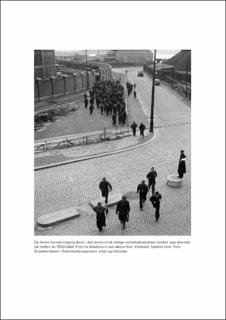En historie om fast og midlertidig arbeid gjennom 1900-tallet, med linjer fram til i dag
Peer reviewed, Journal article
Published version
Permanent lenke
https://hdl.handle.net/11250/3013017Utgivelsesdato
2022-03-23Metadata
Vis full innførselSamlinger
Originalversjon
Arbeiderhistorie. 2022, 36 (1), 142-165. https://doi.org/10.18261/arbeiderhistorie.36.1.9Sammendrag
Med økningen i lønnsarbeid og fagorganisering fra slutten av 1800-tallet kom spørsmålet om arbeidernes tilknytning til bedriftene på dagsorden. Det vanlige ble etter hvert at mange ble ansatt fast i et forholdsvis stabilt arbeidsforhold. I denne artikkelen diskuteres hvorfor fast arbeid ble utbredt i løpet av 1900-tallet. Deretter diskuteres i hvilken grad og hvorfor «fastheten» i arbeidet ble utfordret fra 1980-årene. Oppmerksomheten er særlig rettet mot bruken av bemanningsbyråer i verkstedindustrien og reguleringen av ansettelsesformene på nasjonalt nivå. Artikkelen viser hvordan fast arbeid ble fremmet som en rettighet før det ble en (parti)politisk ambisjon og anerkjent som en juridisk norm. Etter andre verdenskrig ble fast arbeid dominerende både som norm og rettslig sett. Både arbeidsgiveres og fagforeningers strategier pekte mot stabilitet i arbeidsmarkedet og dermed varig arbeid for store grupper arbeidstakere. I 1980- og 1990-årene ble oppslutningen om fast arbeid blant sentrale aktører i norsk arbeidsliv svekket, og uenigheten knyttet til spørsmål om fast og midlertidig arbeid økte. Men den norske historien om fastheten i arbeidet kan likevel ikke utelukkende skrives som en historie preget av endring og oppbrudd. For til tross for endringer og den stadige tautrekkingen om hvor fast arbeidet skulle være, har temaet i betydelig grad vært preget av stabilitet og overordnet konsensus. I tiden etter andre verdenskrig foregikk striden og endringene innenfor noen overordnede rammer: Mange skulle være fast ansatt, men ikke for mange, og faste ansettelser skulle ikke være for faste. With the increase in wage work and unionization from the end of the 19th century, the question of the workers’ attachment to the firms got on the agenda. Gradually, permanent employment in a relatively stable employment relationship became typical. This article discusses why permanent employment became widespread during the 20th century, and to what extent and why the «permanence» of the employment relationship was challenged from the 1980s. Attention is paid to the use of temporary work agencies in the engineering industry and regulation of the employment relationship at the national level. The article shows how permanent employment were promoted as a right, before it became a political ambition and recognized as a legal norm. In the period after World War II, permanent employment became dominant both as a norm and in legal terms. Employers’ and trade unions’ strategies pulled towards stability in the labor market and thus permanent employment. In the 1980s and 1990s, the support for permanent employment among key actors in Norwegian working life weakened, and issues of temporary and permanent employment became more contentious. But the history of permanent employment cannot solely be told as a story of change. Despite the changes, and the contentious character of permanent employment, the issue was characterized by a considerable amount of stability and consensus. In the period after World War II, conflict and changes took place within a general framework: Many should be permanently employed, but not too many, and permanent employment should not be too permanent.

